 |
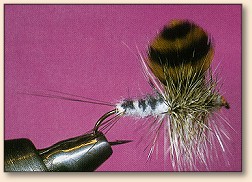 Eastern Green Drake |
|
Materials:Hook: 2X dry fly, size 10 Tiemco 2312. 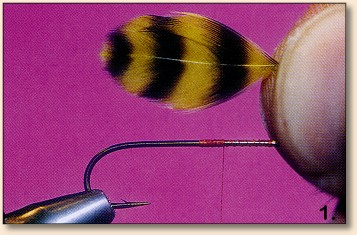 Start thread at the front of the hook and wrap back to the 1/2 point making a smooth thread base. Move thread forward to the 5/8 point. Take care with proportions on this fly, as it is a 2X long hook.
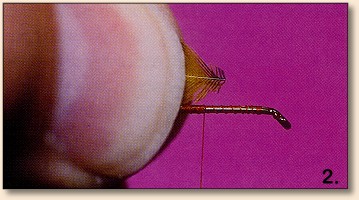 Prepare two grizzly hen back feathers, dyed olive, by putting the concave sides of the feathers together. Make sure the tips are even. Measure the wing to a full hook shank length. Switch hands and trim butt ends of the feathers.
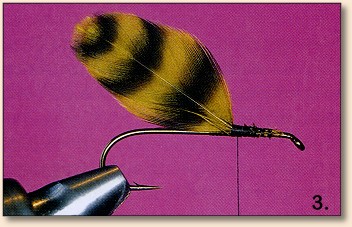
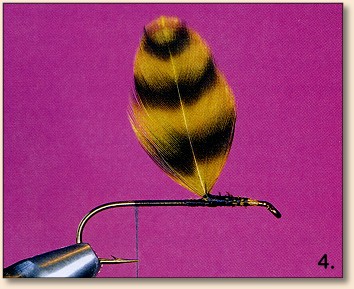 Tie in wing at the 5/8 point of the hook with the tips towards the back of the hook being tied in this way keeps the wing from slanting forward; you always want mayfly wings to cant back in their more natural position. Pull the wing forward and make a few wraps of thread behind the wing to stand it up.
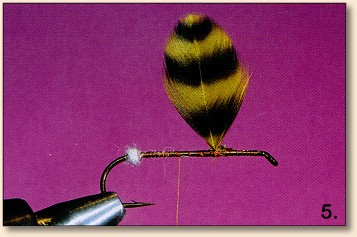 Form a dubbing ball at the back of the hook so the tails can be split.
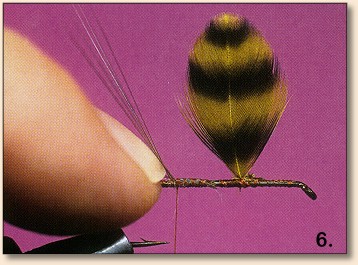
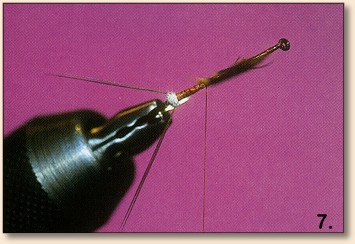 Measure ten micro fibbets to a full hook shank length. Trim the butt ends, tie in at the 1/4 point on top of the hook and make a few tight wraps back. Use a fingernail to stand the fibbets up so they can be counted and split evenly. Position 5 fibbets on each side of the hook and wrap them up against the dubbing ball to produce a 90 degree split of the tails.
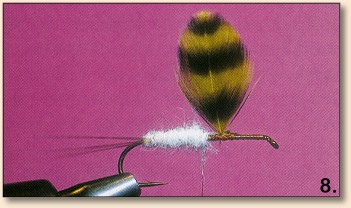 Dub the body to the 1/2 point.
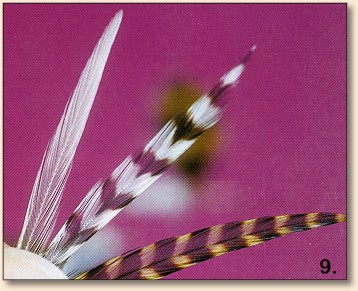 Size and prepare one ginger, one grizzley dryed olive, and one drizzly dry-fly quality hackle. Tie in hackles behind the wing with the concave sides away from you.
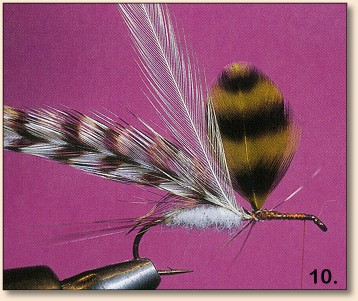
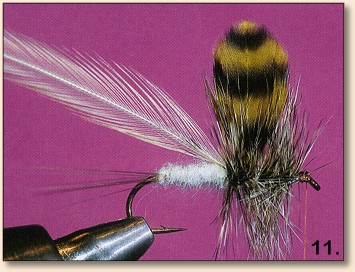 Wrap the two grizzly hackles first and at the same time. Making a half or even a full wrap of the hackle before you attach the hackle pliers will aid in getting the hackles to wrap together. A good pair of hackle pliers helps considerably. Dorin Teardrop hackle pliers are Ken's favorite. Secure hackles. Now wrap the ginger hackle. Weave it through the other hackles as you wrap it forward. Use this third hackle to tweak the wing into position if need be. Secure hackle.
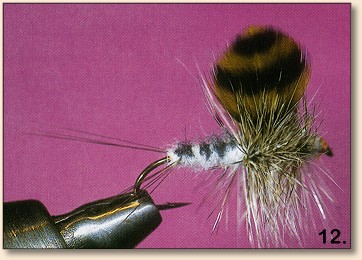 Dub a small cream head and whip finish. Mark the back of the abdomen with a black permanent marker. You and I both know the fish are not going to see these marks, but let's face it, if there was a fly with markings on it and another without, which one would you buy?
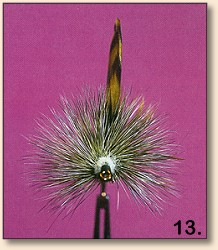 Depending on the type of water you plan on fishing, a V can be trimmed on the bottom side of the hackle to let the fly ride more flush in the water. Flat, smooth water types would be ideal for this method. The fly should be left with its full hackle when fishing in riffles and faster water types. This pattern can be modified slightly to make a very passable Coffin Fly, which is a green drake spinner. Omit the hen back wind, use over-sized dark grizzly and dark ginger hackle, use white dubbing instead of the cream dubbing used on the dun, and simply trim the bottom and top of the hackle so it flies flat on the water. ~ Marty Bartholomew Credits: The Eastern Green Drake is an excerpt from Marty's terrific book, Tying Flies Like a Pro. The book is packed with short-cuts and techniques from many experts. The variety of flies is very impressive, with lots of full color photos. Published by Frank Amato Publications. For more great flies, check out: Beginning Fly Tying, Intermediate Fly Tying and Advanced Fly Tying.
|